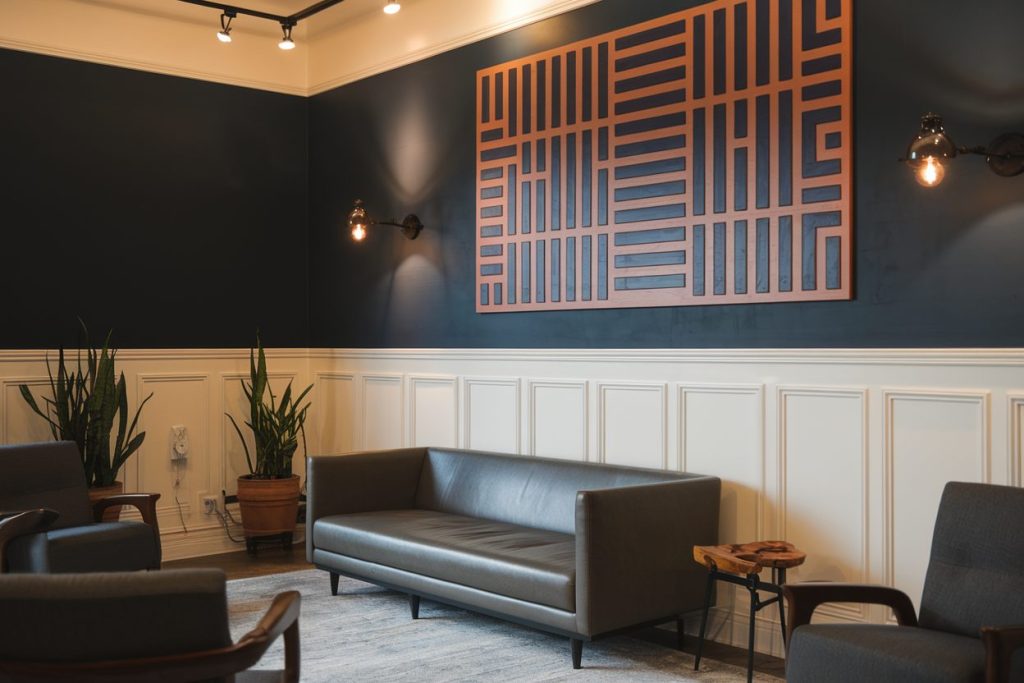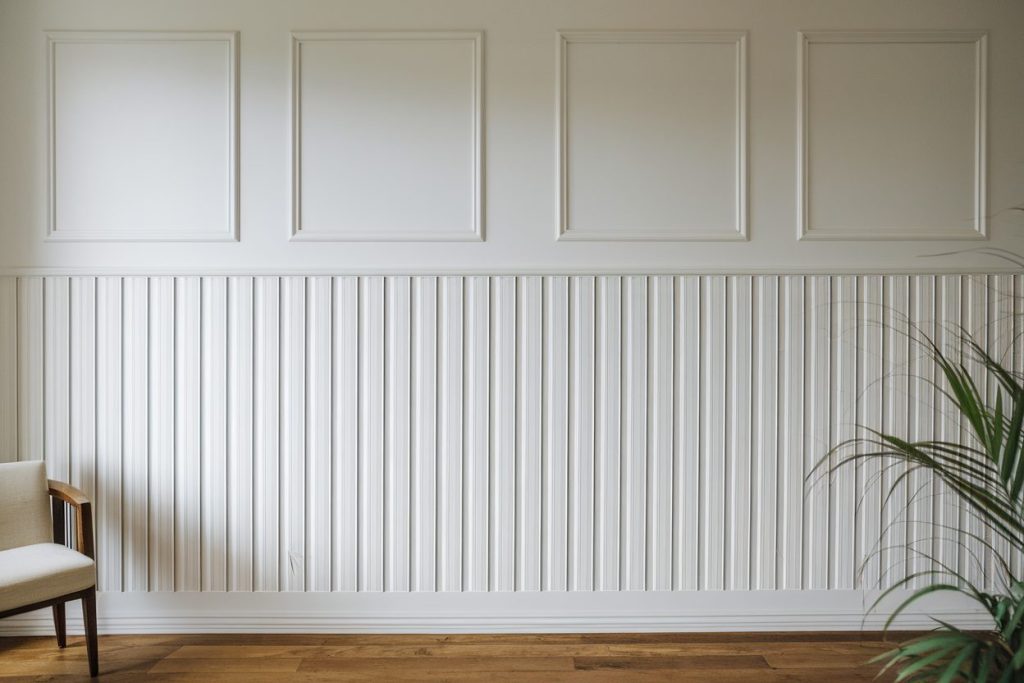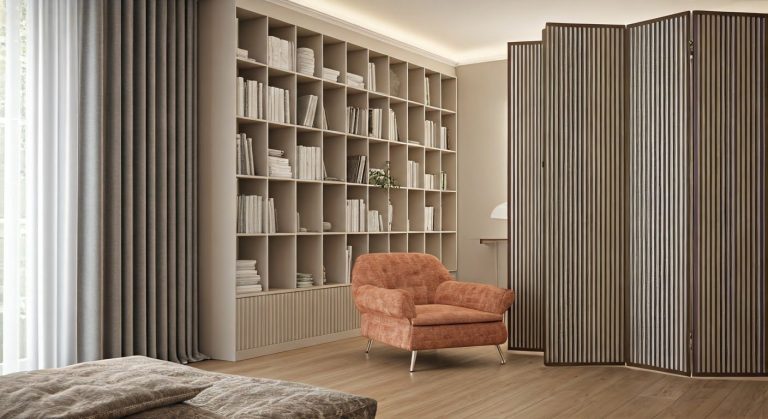Wainscoting has long been a popular interior design feature, but it’s not just for traditional spaces anymore. When used creatively, wainscoting panels can bring a fresh and contemporary vibe to any room. Whether you’re looking to add texture, contrast, or visual interest, there are numerous ways to use wainscoting to elevate modern interiors. In this article, we’ll explore seven innovative approaches to incorporate wainscoting panels for a sleek, modern look.
1. Full-Height Wainscoting for Sleek Modern Walls

Full-height wainscoting takes the traditional half-wall style to new heights, quite literally. By covering the entire wall with wainscoting panels, you can create a sense of height and sophistication in any room. This modern take on wainscoting adds a polished, streamlined appearance, especially when paired with a monochromatic color scheme. Choose contemporary colors like deep charcoal, navy, or crisp white to maintain a minimalist feel while making the space look sleek and elegant.
Materials such as MDF or finely polished wood can enhance this effect, offering a clean finish that’s perfect for modern interiors.
2. Pairing Wainscoting with Bold Accent Color

One of the simplest yet most impactful ways to modernize wainscoting panels is by pairing them with bold, contrasting wall colors. For example, dark wood or black wainscoting can create a striking backdrop when combined with jewel-toned walls, such as emerald green or sapphire blue. This contrast adds depth and drama to your interior while keeping the overall look contemporary and chic.
This method works especially well in living rooms, dining areas, and even bedrooms, giving any space a daring yet refined style.
3. Geometric Patterns for a Contemporary Edge

For those who want to push the boundaries of modern design, consider using wainscoting in geometric patterns. Traditional horizontal panels are great, but modern interiors benefit from more dynamic shapes like herringbone, chevron, or grid layouts. These geometric arrangements bring a cutting-edge aesthetic to spaces, making them feel both modern and visually interesting.
Geometric wainscoting designs are particularly effective in entryways, home offices, or feature walls where you want to make a bold design statement.
4. Using Beadboard Panels for a Sleek, Minimalist Finish

Beadboard wainscoting has a more subtle texture compared to traditional raised panels, making it ideal for modern interiors with a minimalist flair. Beadboard wainscoting panels, especially when painted in white or light neutral tones, can give bathrooms, kitchens, and mudrooms a crisp, clean look.
For a truly minimalist approach, pair beadboard with sleek, contemporary lighting fixtures and understated decor. The result is a bright, airy space that feels open yet structured.
5. Mix and Match Textures for Depth and Interest

In modern design, texture plays a significant role in adding depth to spaces. By mixing and matching textures, you can create a more dynamic and engaging interior. For instance, pairing smooth wainscoting panels with textured wallpaper or a matte wall finish offers a modern twist on this classic design feature.
This approach works particularly well in bedrooms and living rooms, where you can use wainscoting to highlight focal points like the bed or a fireplace while maintaining a modern, layered look.
6. Wainscoting Panels in Neutral Tones for Subtle Elegance

Neutral tones are a hallmark of modern design, offering a sleek and sophisticated backdrop for contemporary furnishings and decor. By choosing neutral colors like light grey, soft beige, or even a warm white for your wainscoting panels, you can create an understated elegance in any room.
This approach works especially well in dining rooms, living rooms, and even hallways, where the wainscoting provides subtle texture without overwhelming the space.
7. Incorporating Wainscoting in Open Concept Spaces

In modern open-concept living areas, it can be challenging to define different zones without disrupting the flow of the space. Wainscoting panels can help solve this design dilemma by subtly marking transitions between areas, such as the living room and dining room, without needing solid walls.
Using half-wall wainscoting is a great way to achieve this. The panels offer structure and distinction between spaces while maintaining the open, airy feel that’s essential to modern living areas.
Conclusion
Wainscoting panels aren’t just for traditional homes—they can also be a versatile tool for creating stylish, modern interiors. Whether you’re experimenting with full-height panels, geometric designs, or neutral tones, wainscoting offers countless possibilities to enhance the look and feel of your home. By incorporating these innovative ideas, you can bring a fresh, contemporary twist to any space with ease.






